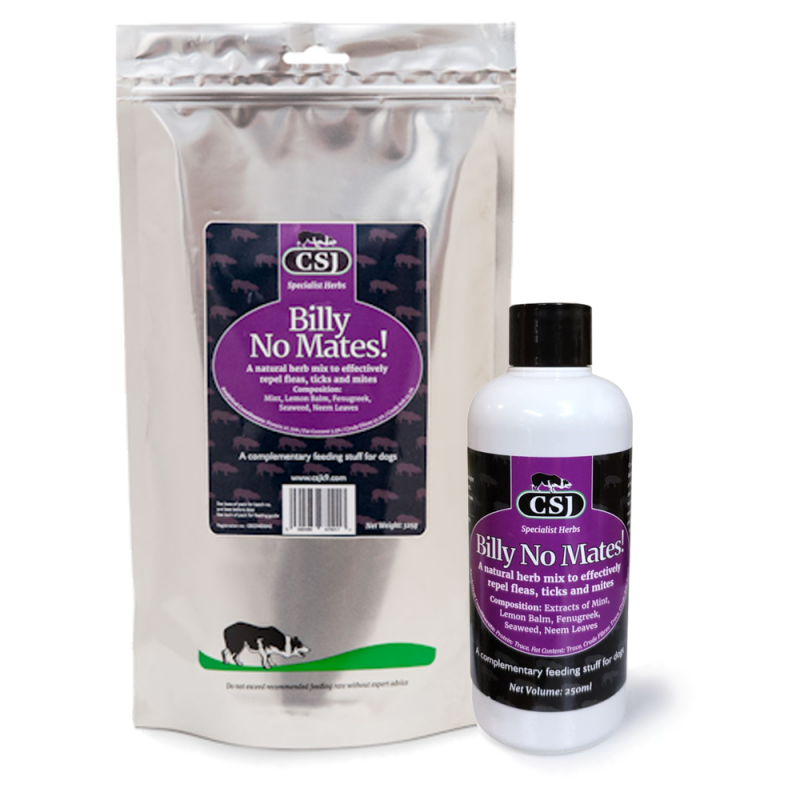Transitioning to natural flea & tick control
We are often asked how to transition to natural flea and tick control especially when people have previously used conventional flea and tick treatments. There are no known issues starting natural flea treatments while using conventional products, so start today.
There is emerging concern, even amongst vets, over the regular preventive treatment of fleas on pets. Flea treatments can be toxic for pets and the environment, and it is only pets that are allergic to flea bites that should be treated preventively. Most healthy pets will only need treating if they actually get fleas.
Natural flea and tick control takes a wide view of the issue and centres around:
- Using natural supplements to improve skin and coat condition and repel fleas and ticks.
- Using shampoos and sprays containing essential oils known to repel fleas and ticks.
- Using non-toxic treatments for the home to get rid of fleas.
- Changing the environment to reduce the likelihood of your pet getting fleas and ticks.
- Checking your pet regularly for fleas and ticks.
You can start using natural flea and tick control while using conventional products.
Supplements take a little time to build up to their full effect (from 2 to 6 weeks for Billy No Mates, around 3 weeks for our Neem Shield herbs) and during this time, you can use conventional flea control or our Shield spray and shampoo for extra protection.
Supplements work by changing the skin's environment making it less attractive to parasites. Mites and fleas have a developed sense of smell and use it to find their next meal- some of the compounds which build up in the skin from supplements may confuse them or repel them.
There have been many scientific studies showing that neem is very effective at getting rid of fleas and ticks when used externally and there are scientific studies showing reduced tick burdens in animals fed neem supplements. Brewers yeast is another popular ingredient in anti-flea and tick supplements and is rich in B vitamins for a healthy skin.
Fenugreek is rich in amino-acids and has been used extensively in Ayurvedic medicine for healthy skin and hair. Garlic is another ingredient which is often used to ward off pests, however there are concerns over its safety in dogs - dose with caution!
Supplements are usually fed each day, starting a few weeks before the start of the flea season (usually March) in order to let the product build up effect. Fleas tend to be a risk through to October/November depending on the weather and ticks are classically an issue in the spring and autumn, so supplements can usually be stopped during the winter without an issue.
Extra protection
Our Shield shampoo and spray contain high strength neem extract, cider vinegar and essential oil known to repel fleas, ticks, mites, lice and flies. We advise spraying dogs (undercarriage and legs) before each walk especially when it is hot and humid as these are conditions in which pests thrive and multiply! For cats, use the Neem kit for pets, neat neem oil behind the neck/base of tail or the Pet dusting powder.
Take care after taking your dog to the groomers as washing may interfere with the effect of the supplements. If it is necessary to wash your dog, we would advise our Shield shampoo with neem and essential oils. Make sure to spray with Shield spray when you walk your pet after a session at the groomers.
Other things to do
Is there anything you need to change in the environment to stop your pet getting fleas? If other cats come in the house, consider getting a magnetic cat flap to stop them bringing fleas in.
If you feed foxes or other wildlife, feed them at the bottom of the garden rather than on the patio to stop them leaving fleas and ticks close to the house. For the same reason, remove undergrowth near the house and especially near doors.
When you go for a walk, keep to the paths or areas with short grass, especially in the mornings when ticks may be actively questing for a meal.
Keep checking your pet- a flea comb is your best friend to see if there are flea dirts or fleas in the coat. For a quick check, stand your pet over a white surface and ruffle the coat, if there are black specks that fall out of the coat and stain red with water, then those are flea dirts and you will need to treat your pet for fleas.
Check your dog for ticks after every walk- ticks are easily missed, especially in the spring when the smaller nymphs may attach. Check around the head, armpits and between the toes and investigate any lumps you feel when stroking your pet.
Natural flea control does work, and it's less toxic for your pet, your family and the environment as a whole, so worth doing - and you can start today.


.jpg)
.jpg)



.jpg)
.jpg)
.jpg)

.jpg)

.jpg)


.png)
.png)